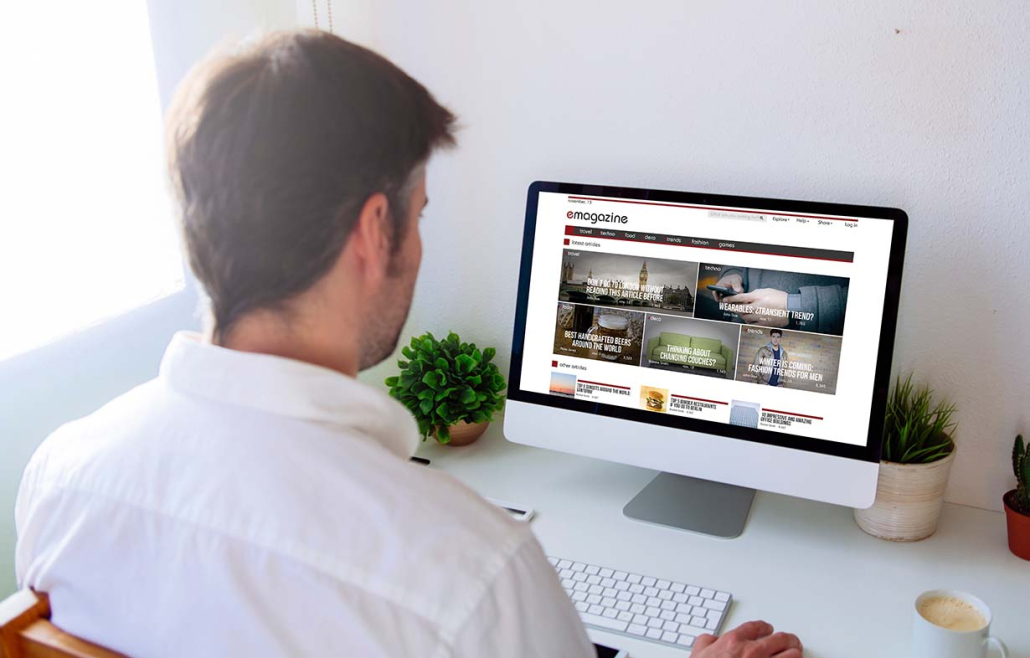Today, every business needs a website. It allows potential customers or clients to learn about your service, contact you, view, and book services, and/or purchase products. When starting a new business, building its website is one of the first things you should do.
Creating and designing a website, however, takes a lot of skills and knowledge that you probably don’t have time to dedicate yourself to, especially since you’re running your business. Hiring a team to design, build, and maintain your website gives you a professional and effective website without you sacrificing your time where it matters most. Our web design team creates professional, beautiful, functional, and accessible websites that suit your business. Before they can start designing, there will be a few things you will need to do. Here are all the essentials you need before you meet with Rosewoods’ team, and they start designing the website that perfectly represents and serves your business.
Registering a Domain
In order for you to start a website, your business will need a domain name. The domain is the main address that points to your website. google.com, wikipedia.org, and rosewoodmarketing.ca are all examples of domain names. There can be a lot that goes into coming up with a domain, like whether you want a .com, .ca, or another top-level domain. Two quick standards to remember is that shorter and memorable are better, and ensure it aligns with your brand’s name.
However, you can’t just create and have a domain. It needs to be available and registered. To see if a domain is available and how much it will cost, use a registry service, like GoDaddy. A domain will cost you an annual fee to register and retain. If the domain is new, it will be a nominal cost, but already registered domains can cost significantly more. However, if your new domain gains value and you decide you want to sell it, GoDaddy provides this option.
Content
To build your website, it will need content: pictures, text, graphics, etc. Gather and create/commission all the materials you want for your website. If you’re not sure what to include, look at the websites of similar businesses to get a sense of the kind of content you need. An “about us” write up, contact information, location, availability, information about the services or products you provide, and a gallery of your store or examples of your work are all standards.
Logo and Branding
Often when starting your business, after the countless hours of picking the right, and available, name then comes the struggle of just the right logo. It’s the icon that will represent your business on all its communication channels. It will also be a main image on your website so it’s essential you have it ready beforehand. Along with your logo, you will need your branding. Your branding determines your business’ aesthetic. A marketing team will use these colours, fonts, and voice/tone to design a perfectly representative website.
Pictures Really Are Worth a Thousand Words
A lot of your website’s content will be visual to give a full impression of your business. There are two main options to give your website professional pictures. One more immediate option is to create a collection of stock images. Only pick those that reflect your business’ brand and aesthetic, or else the images will feel disingenuous. Alternatively, book a photoshoot to get professional pictures for your site. These will give your website a more accurate and authentic reflection of your business. Fortunately, Rosewood also provides brand photography. Let us know if this is something you would like to add to build your website.
Get a Google Business Profile
Google Business is one of the essential places you need to be listing your business. By creating a Google Business Profile, your business will populate in Google searches, and you can directly connect your website to the profile. You can also post the same pictures from your photoshoot here. This profile will help optimize your new website for Google searches so that more people discover your business and visit the website.
A Website Hosting Provider
A domain allows users to get to your website by entering the address in their browser, but your actual website and all its content will need to be hosted on a server that people can access. You will need to subscribe your domain to a hosting service that will keep your website up. There are numerous hosting services available, but your marketing and website design team can recommend a hosting provider. We recommend Cloudways or use our affiliate link with Siteground.
Connecting with a Marketing Team
The expertise of a marketing team like Rosewood’s can help you strategize the most effective sections, social media connections, and content plans like blogs and email marketing for your business’ website. They can also help you with content and branding, and help you determine the best combination that will perfectly suit your business and properly contend with any competition. Contact our marketing team for help strategizing your website.
You are ready to build a website!
Once you have these materials prepared, you’re ready to have a website built and designed. Our website design team will take all these and create mockups for your approval. Once approved, you’ll soon see your website starting to come to life. Ready to start the design process? Contact Rosewood’s website design team today!






